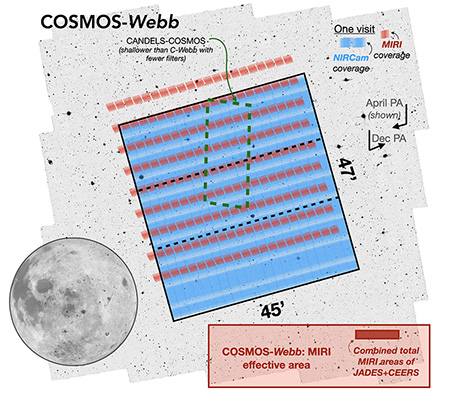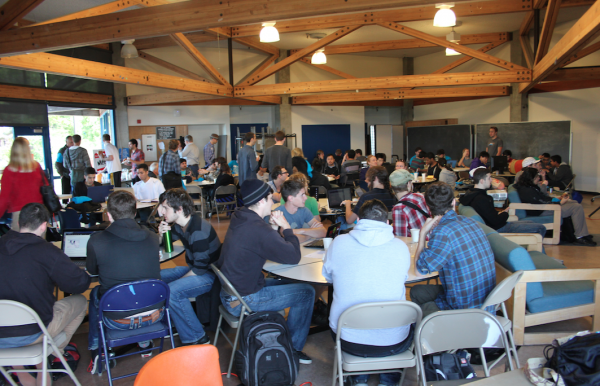Featured
James Webb Space Telescope program aims to map the earliest structures of the universe

By Tim Stephens
UC Santa Cruz
April 22, 2021 — Santa Cruz, CA
[Image: The COSMOS-Webb survey will map .6 square degrees of the sky—about the area of three full moons—using the James Webb Space Telescope’s Near Infrared Camera (NIRCam) instrument, while simultaneously mapping a smaller .2 square degrees with the Mid Infrared Instrument (MIRI). (Credit: J. Kartaltepe/RIT; C. Casey/UT Austin; Anton Koekemoer/STScI)]
COSMOS-Webb is slated to be the largest program in JWST’s first year of operation
When the James Webb Space Telescope (JWST) becomes operational in 2022, one of its first orders of business will be mapping the earliest structures of the universe. A team of nearly 50 researchers, including UC Santa Cruz astronomers Brant Robertson and Nicole Drakos, will attempt to do this through the COSMOS-Webb program, the largest general observer program selected for JWST’s first year.
Over the course of 208.6 observing hours, the COSMOS-Webb program will conduct an ambitious survey of half a million galaxies with multi-band, high-resolution near infrared imaging and an unprecedented 32,000 galaxies in mid infrared. Led by scientists at Rochester Institute of Technology (RIT) and University of Texas at Austin, the COSMOS-Webb program will rapidly release data to the public so it can lead to countless other studies by other researchers.
Continue reading here: https://news.ucsc.edu/2021/04/cosmos-webb.html
###
Tagged astronomy, UC Santa Cruz








